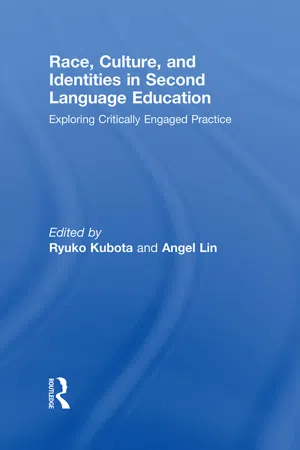Race
In everyday discourse, the word race invokes phenotypical features such as skin color, eye shape, hair texture, facial features, and so on. However, scientists generally agree that race is not a concept determined by biological evidence. In other words, categorization of different races cannot be verified by biological constructs such as genetic characteristics. Arguing that any differentiation of races, if they exist at all, depends on relative, rather than absolute, constancy of genes and raising a problem of classifying the human species in racial terms, Goldberg (1993) states:
More recently, the Human Genome Project has shown that 99.9% of human genes are shared in common, leaving only 0.1% for potential racial difference in a biological sense (Hutchinson, 2005).
In the sense that racial categories are not biologically determined, races do not exist. However, the recent approval of BiDil in the United States, a cardiovascular drug targeted for African Americans or the first racial drug (Duster, 2005), represents sustained scientific interest in grouping people according to race in investigating the relationship between genetics and diseases. In such explorations, the category of race has been replaced by the concept of population identified by genetic characteristics (St. Louis, 2005). According to St. Louis, particular populations are identified through certain objective genetic distinctions which may only partially correspond to socially conceived racial categories. He argues that, nonetheless, the concept of population tends to slide back into the existing social category of race, making biological racialization, for instance, in the discourse that supports the relationship between a racial group, identified as special or target population, and greater health risks.2
The above slippage signifies the conceptual basis of race as a socially constructed discursive category and the pervasiveness of the idea of race used for legitimating divisions of human beings and forming our judgment of where people belong based on phenotypical characteristics. According to Omi and Winant (1994), “race is a concept which signifies and symbolizes social conflicts and interests by referring to different types of human bodies” (p. 55). As a social construct, racial representations are always in flux and situated in social and historical processes. Race is socially and historically constructed and shaped by discourses that give specific meanings to the ways we see the world, rather than reflecting the illusive notion of objective, stable, and transcendent truths. Put differently, race parallels the nation as “imagined community” (Anderson, 1983). Miles (1987) argues:
Furthermore, that race is a social construction raises the question of whether the term race can be used as an analytical category for scholarly investigation and discussion. Some sociologists with neo-Marxist perspectives, especially those in the United Kingdom, have argued that using race as a descriptive and/or analytical category assumes its existence as a reality that divides groups of people into different races, contradicting the notion that race is a social construct rather than an ontologically determined category. It further legitimates the process of racialization, which leads to racism when a negative view of the Other as inferior is attached (see Miles, 1993; Darder & Torres, 2004). These scholars advocate abandoning race as an analytical category and focusing instead on racialization and racism (see more discussion below). Yet others argue that while race is a historical, cultural, and political construction rather than a homogeneous, unitary, and static category, it can politically and strategically mobilize racially oppressed groups to create solidarity and resistance (see Solomos, 2003). These contested meanings of race indicate the need for us to continue theorizing and clarifying our focus of investigation.
Ethnicity
A concept related to race is ethnicity, which is sometimes used as a politically correct code word for race (Miles & Brown, 2003). It is often used as a category to distinguish groups based on sociocultural characteristics, such as ancestry, language, religion, custom, and lifestyle (Thompson & Hickey, 1994). However, like race, ethnicity is an equally contentious term with definition and boundary problems (Miles & Brown, 2003). If it denotes sociocultural characteristics, how do we, for instance, define culture? Where can cultural boundaries be drawn in order to distinguish unique ethnic groups? How are diasporic groups categorized? Take, for instance, Asians who immigrated to Peru and other Latin American countries generations ago but have recently moved to Los Angeles (see Darder & Torres, 2004). Which ethnic group do they belong to? If they enroll in ESL classes, will they be perceived as Asian or Latin American? What assumptions would their teachers and peers have in interacting with them? Thus, although the notion of ethnicity appears to be concrete and easy to conceptualize because it is closely connected to a familiar and ordinary notion of culture, the concept is as elusive as race given the tremendous variability within a group and similarity among groups. Just as race is not a biologically determined construct, ethnicity does not denote innate or inherent attributes of human beings. Rather, it is a relational concept that sets one group of people apart from another—a process of constructing differences. In discussing ethnicization and racialization, Lewis and Phoenix (2004) argue:
